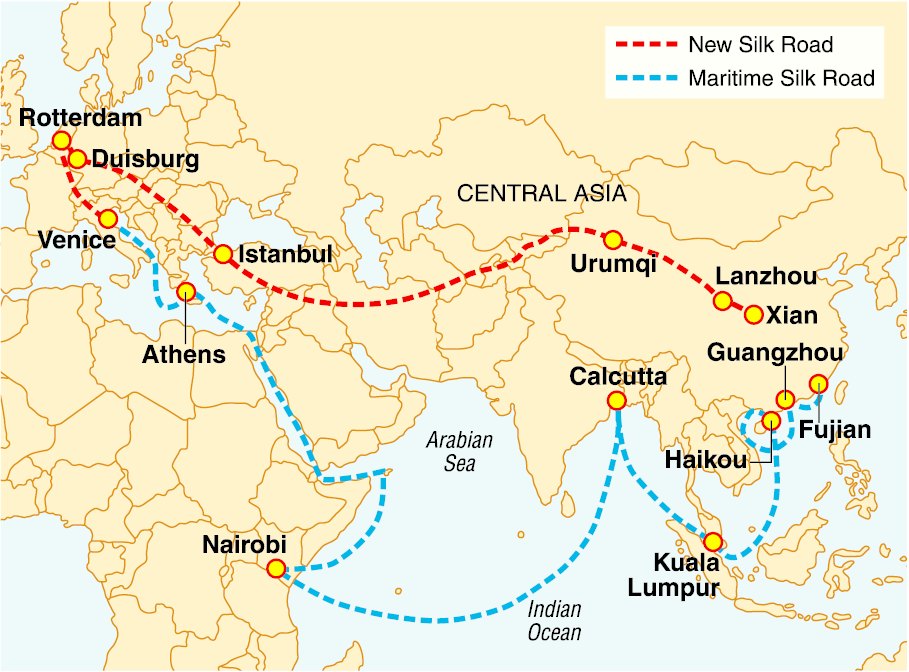The New Silk Route is one of the most ambitious trans-continental roadways in the 21st century. It connects China to Eurasia, promoting trade and other factors for mutual benefits. The route is about 12,000 km long and is one of the foremost strategy frameworks proposed by the Chinese President, Xi Jinping. It is evident that China is eager to become a greater international player in terms of business. With the opening of this route, China will be able to transport goods to the rest of western Asia and Europe. The route consists of two projects, the Silk Road Economic Belt (SREB) over the land and the Maritime Silk Road (MSR) through the ocean.
The project aims to connect China to as many as countries. The last phase of the route will also connect the East African countries. The maritime route will connect countries as far as Oceania. The total cost of the project is estimated to be around $8 trillion.

Why is China building this route?
The key reason for China to build the New Silk Route is to spread trade, commerce and business connections over the other countries. The route encompasses a huge area in Asia and Europe. China is a fast-developing country and its productions are increasing rapidly. They need a vent to export these goods. With the new route connecting so many countries, it will create the much-needed infrastructure for them. Well, the ancient stories of China speak of an old silk route that they used to transport goods through. This route is similar to the older one in terms of concept. However, it is much more planned and extensive.
How is it going to benefit the European countries?
Building the New Silk route will not only facilitate China, but also a number of European nations. The route permits two-way transportation, therefore, the European countries will be able to export their goods to china through this route. It will promote the mobility of manufactured products. From heavy engineering to light-weight goods, the route will open up a seamless transportation process for all types of products.
The route is likely to open up new markets for the countries. Local production like phones and pharmaceuticals is going to get a boost. Altogether, it will expand the customer base for the countries in this region. It will promote cooperation and speed up the process of transporting goods.
The first goods train from China to Britain had carried 34 wagons, and on the return, it will stop in Britain to be loaded with goods to be sent from Europe to China. The route will cut down the transportation costs by a huge margin. Presently, goods need to be transported from Europe to China through the air route. The New Silk Route will permit trains to run in the East-West direction, reducing the expenditure to almost a half. It will be profitable for the Western companies as well. Apart from this, the Maritime route will be the fastest route for travelling across the sea. With all these developments, trade and commerce is likely to get a boost in the year to come.
China too, is going to benefit from the project. Economically, it is the fastest growing economy of the world. With the ambitious project targeting the international market, its trade and commerce will definitely get a boost. Apart from China, other countries around the route will also enjoy a slice of the benefits. Thus, the New Silk Route is one of the most important developments in recent times in terms of global infrastructure.


